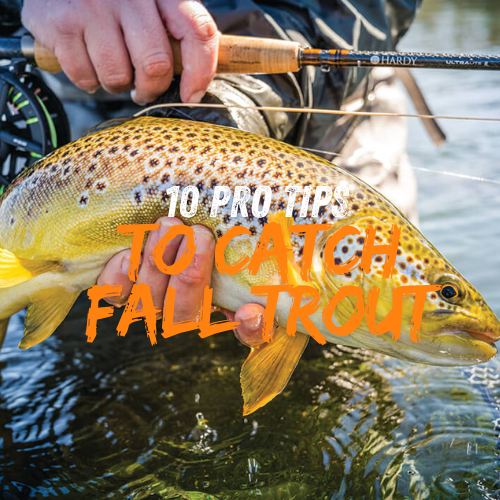
Unlock 10 Pro tips to catching Fall Trout
Share
When it comes to catching trout in the fall, lets face it this can be a slower time for many anglers. Quite often this leads to frustration and anger, in some cases.
But this is also a time when the fish can really be on the feed and offer anglers some new PBs.
Truth be told the SOF team loves the fall fishing season despite all the frustration it can bring.
The team at SOF has put together a cheat sheet on 10 pro tips for catching big trout in the fall.
1.Time Your Trips Right: Fall trout tend to be most active during late morning and early afternoon when the sun has had time to warm the water a bit. Aim to be on the water between 10 AM and 2 PM.
2. Focus on Transition Areas: During fall, trout will often congregate in slower, deeper pools or transition areas where fast and slow water meet. Target these zones for higher success rates.
3.Match the Hatch: Fall can see a variety of insect activity, including caddis,midges, and small mayflies. Be observant and match your fly patterns to what’s naturally occurring
4. Use Streamers for Aggressive Fish: Brown trout become more aggressive during spawning season. Streamer patterns, like Woolly Buggers or Sculpin imitations, can trigger territorial strikes.
5.Downsize Your Flies: In clearer, lower water conditions, use smaller nymphs and dry flies (size 16-22). Midges and tiny blue-winged olives are often the go-to.
6.Switch Up Your Tippet: With fall’s lower, clearer water, opt for lighter tippet, like 5X or 6X fluorocarbon, to avoid spooking trout.
7.Keep an Eye on Weather Changes: Sudden temperature drops or rising pressure systems can impact feeding behavior. Plan your trips around consistent weather patterns if possible.
8.Take Advantage of Fall Spawning Runs: Browns and brook trout often migrate upstream to spawn in the fall. Focus on river mouths and gravel beds for these fish on the move.
9.Pay Attention to Fallen Leaves: Leaf litter can be both a challenge and a clue. Trout often hold beneath floating mats of leaves or alongside submerged cover. Approach these areas with stealth.
10. Adapt to Slower Flows: Fall waters are often lower and slower. Use longer leaders and lighter presentations to reduce the chance of scaring fish in these more delicate conditions.
By applying these tips, you’ll be better equipped to make the most of your fall trout fishing
season!
